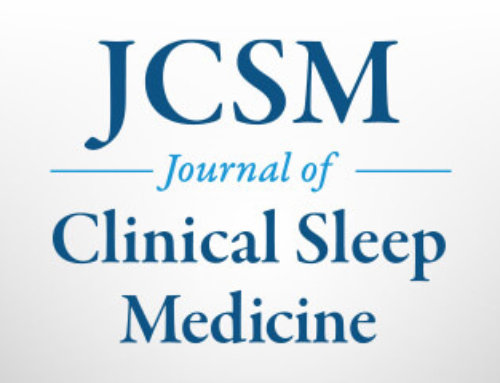WESTCHESTER, Ill.– Normal rapid eye movement (REM) sleep is characterized by tonic features, including cortical electroencephalogram (EEG) desynchronization and muscle atonia, as well as phasic events, including bursts of REM, phasic activities of both chin and limb electromyography (EMG), and cardiorespiratory variability. Persons with narcolepsy, however, have a high frequency of REM sleep without atonia and of elevated EMG phasic density, according to a study published in the July 1 issue of the journal SLEEP.
The study, conducted by Jacques Montplaisir, MD, PhD, of the Sleep Disorders Center at the Université de Montréal in Canada, focused on 16 patients with narcolepsy and cataplexy, who were matched for age and sex with 16 patients with “idiopathic” REM sleep behavior disorder (RBD) and with 16 normal controls.
In his research, Dr. Montplaisir discovered that higher percentages of REM sleep without atonia, phasic EMG activity and REM density were found in patients with narcolepsy than normal controls. In contrast, RBD patients had a higher percentage of REM sleep without atonia, but a lower REM density than patients with narcolepsy and normal controls.
Based on a threshold of 80 percent for percentage of REM sleep with atonia, 50 percent of narcoleptics and 87.5 percent of RBD patients had abnormal REM sleep muscle activity. A higher frequency of periodic limb movements during wake and during sleep in narcoleptic patients, compared to controls, was also noted.
“This study also shows several REM sleep motor dyscontrol similarities between narcolepsy and RBD, suggesting the possibility of a common neurobiological defect of motor inhibition during REM sleep,” said Montplaisir. “However, behavioral manifestations in REM sleep seem to be less frequent and severe in narcolepsy than in ‘idiopathic’ RBD. These results also support the idea that a decreased hypocretinergic and/or dopaminergic abnormalities input to brainstem structures may contribute to dissociated sleep/wake states.”
Narcolepsy is a sleep disorder that causes people to fall asleep uncontrollably during the day. It also includes features of dreaming that occur while awake. Other common symptoms include sleep paralysis, hallucinations and cataplexy.
About one out of every 2,000 people is known to have narcolepsy. There appears to be a genetic link to it.
Those who think they might have narcolepsy, or another sleep disorder, are urged to discuss their problem with their primary care physician, who will issue a referral to a sleep specialist.
SLEEP is the official journal of the Associated Professional Sleep Societies, LLC, a joint venture of the American Academy of Sleep Medicine (AASM) and the Sleep Research Society.
SleepEducation.org, a website maintained by the AASM, provides information about the various sleep disorders that exist, the forms of treatment available, recent news on the topic of sleep, sleep studies that have been conducted and a listing of sleep facilities.
For a copy of this article, entitled, “REM Sleep Characteristics in Narcolepsy and REM Sleep Behavior Disorder”, or to arrange an interview with an AASM spokesperson regarding this study, please contact Jim Arcuri, public relations coordinator, at (708) 492-0930, ext. 9317, or jarcuri@aasm.org.
# # #




